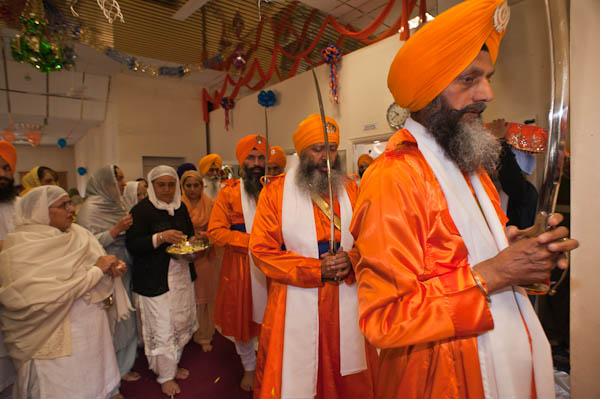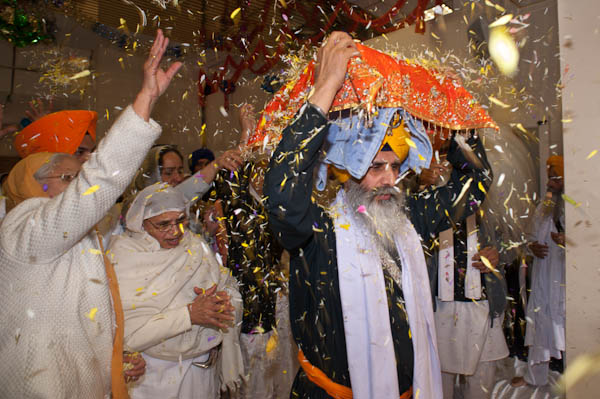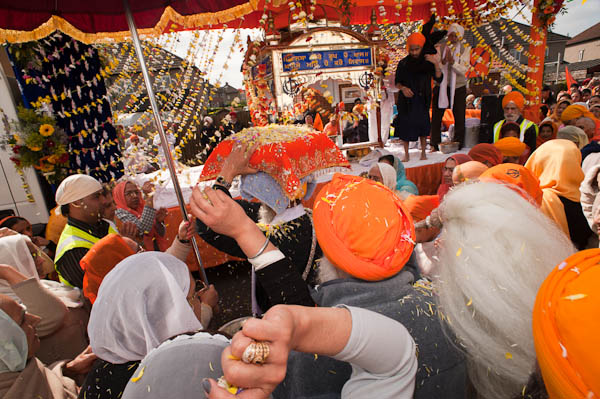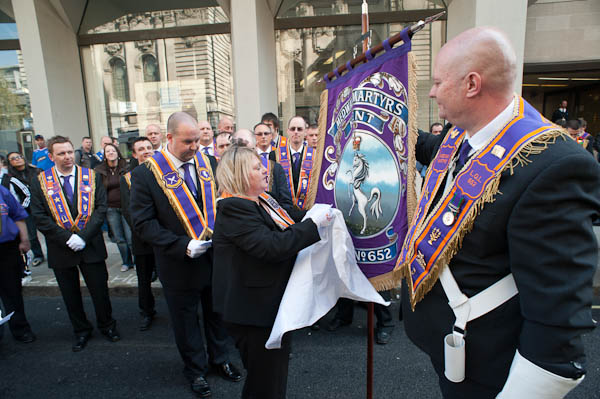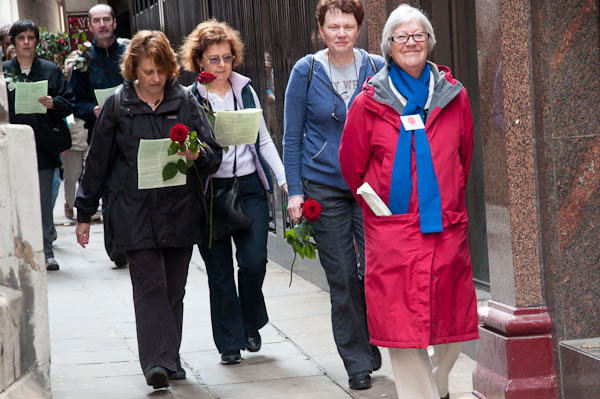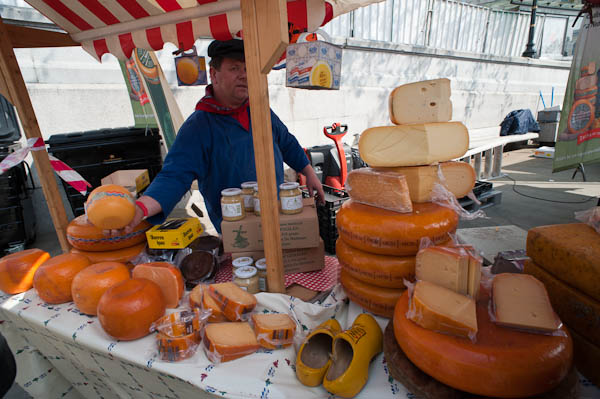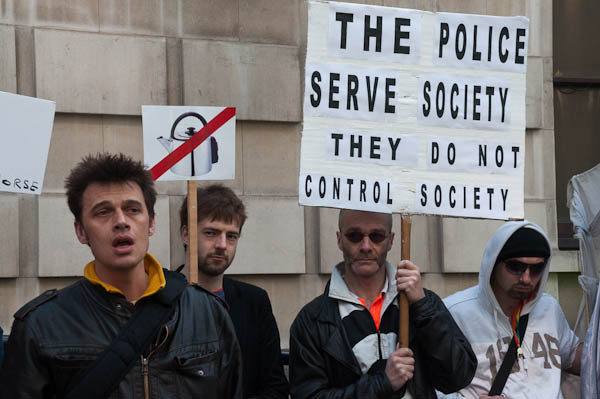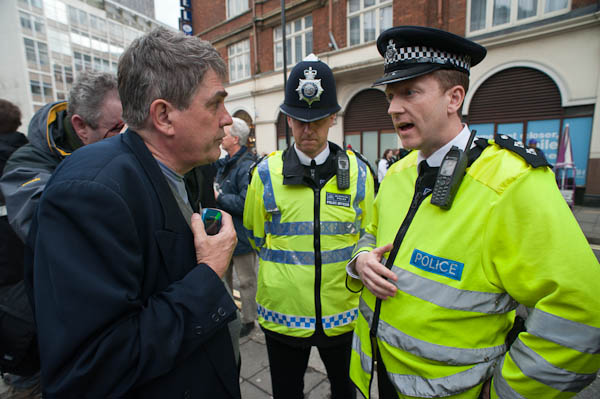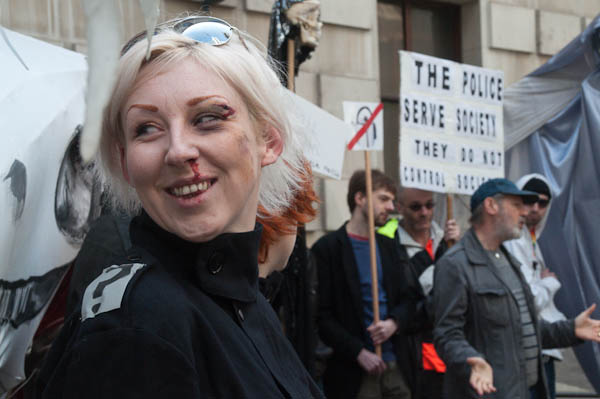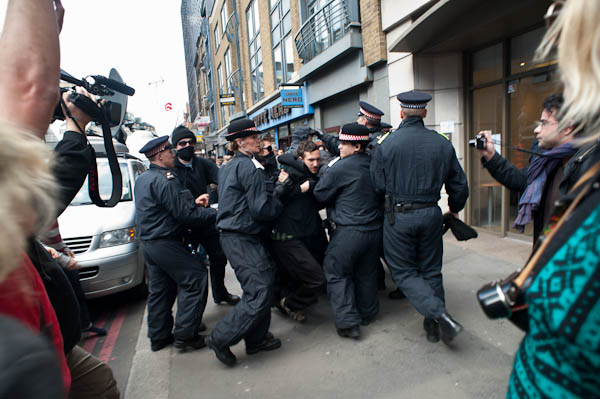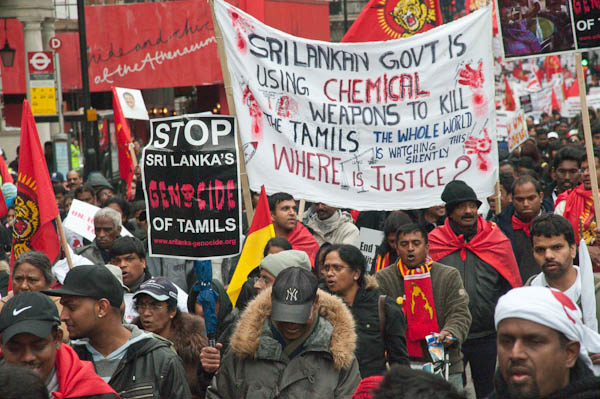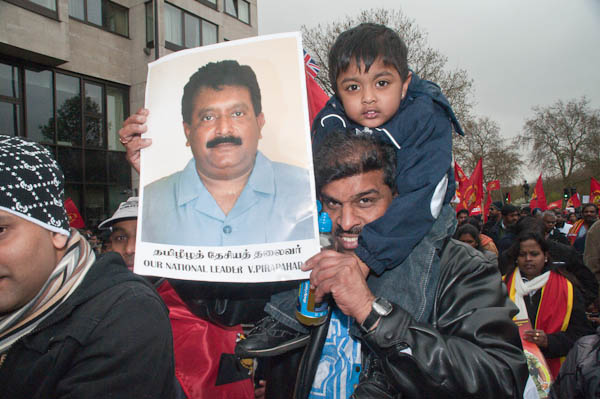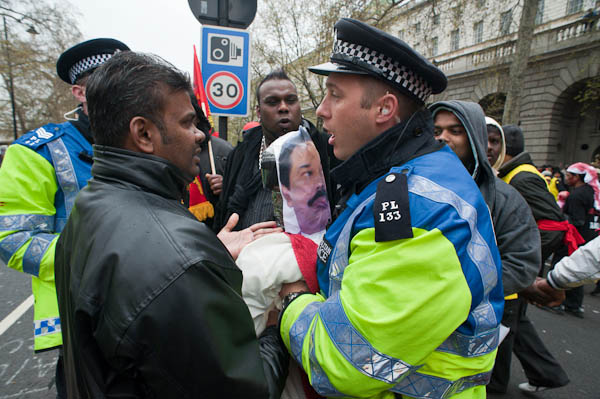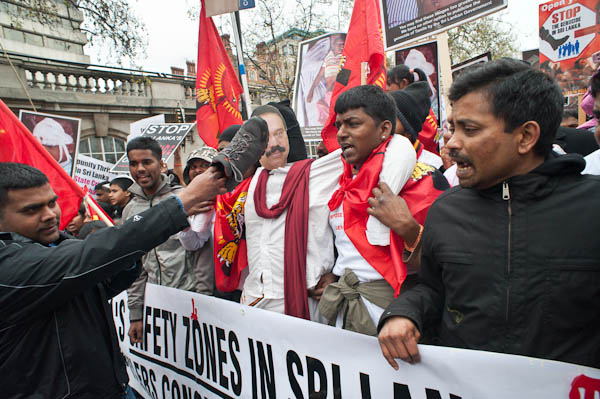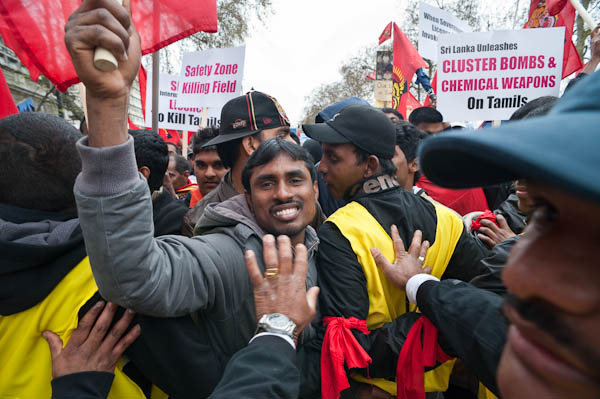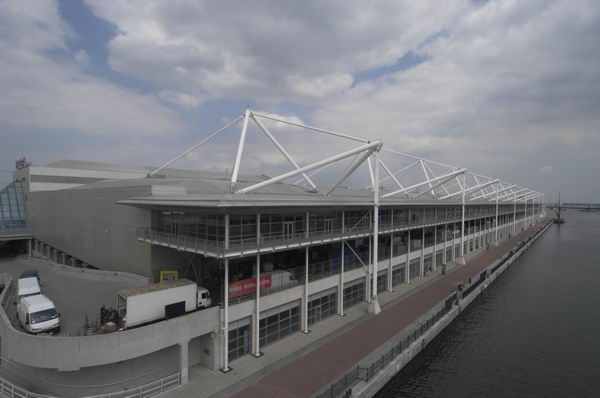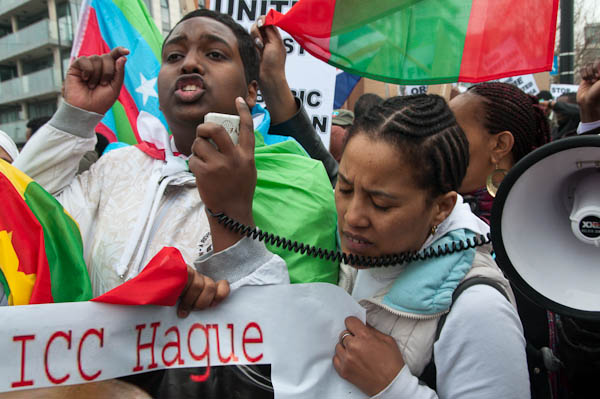I spent much of the day on April 23 looking for St George around the centre of London, and was largely disappointed. Celebration of our patron saint’s day still seems to be pretty low key, and I found a handful of members of the English Democratic Party in Trafalgar Square trying to drum up support for a national holiday every April 23. At least this year – unlike last – they were allowed to visit our National Gallery in the square, which was also putting on some related events. Apparently last year they were refused entry for wearing the national flag.
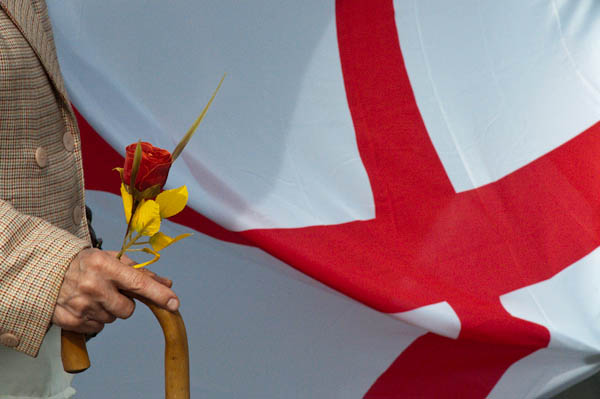
Looking for St George’s Day in Trafalgar Square – more pictures
Others were in the square expecting something to happen, but without success, though when I returned later things were a little livelier. Meanwhile I knew that the theatre group, The Lions part, were giving some performances during the afternoon in Southwark and I went to take some pictures of St George and the others there.
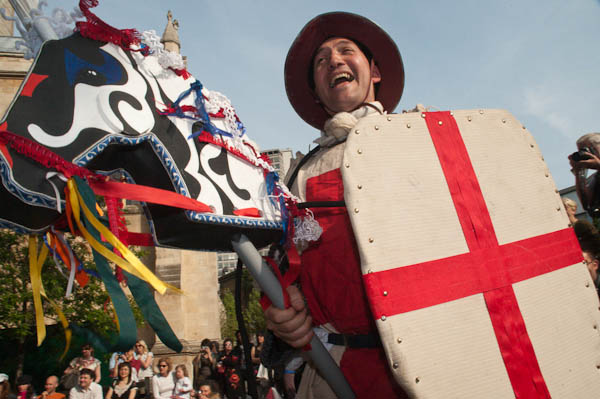
The Lions part: St George (& the Dragon – more pictures)
There were other things going on that I missed, some on purpose. Boris took a trip to the City for some cheap publicity, and Southwark Cathedral and St Georges Church were also marking the day with events.
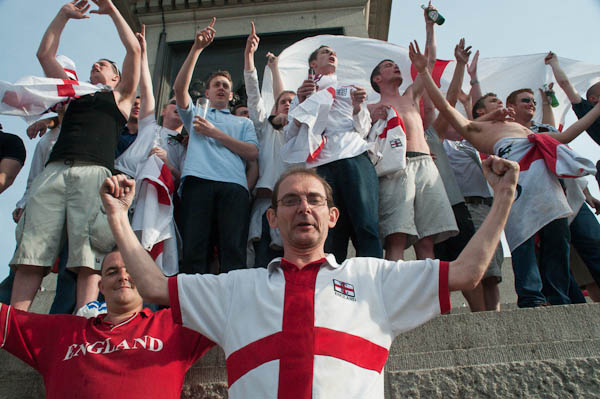
England Supporters – More pictures
I went back to Trafalgar Square on my way to the Photographers’ Gallery, and found around 25 young people having a noisy time on the plinth below Nelson, and then another theatre group who had come out from their show in the National Gallery decided to put one on in the square also – with a little more audience participation than they are used to.
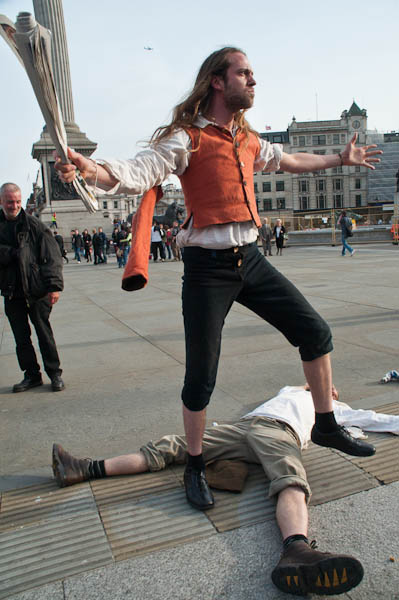
St George is defeated by the Turkish Knight, while ‘Lucozade Man’ looks on. More pictures
The latest show at the Photographers’ Gallery didn’t detain me long, though as always I read the texts and looked at the pictures and other objects. As before the most interesting work was on around the edges, in the print room (including a couple of nice prints by Thurston Hopkins – which reminded me very much of my own games on the streets in the 1950s) as well as work by Guy Tillim I’ve mentioned before. Although I appreciate a wide range of work across all the genres, the PG doesn’t seem to be showing much of quality outside the odd bit of photojournalism these days.
In the main show, the work of Gerhard Richter stood out rather more than head and shoulders above the rest (perhaps from the ankles up?) , though I don’t think the small photographs which he has over-painted actually have a great deal to do with photography or being a photographer – and there are some rather more interesting examples on the web site.
One of those admiring Hopkins work with me was Shimelis Desta, formerly the court photographer to the Ethiopian Emperor Haile Selassie, some of whose work was shown in the Photographers Gallery in 2007. You can see a CNN film about how he managed to get this work out of the country on YouTube. He tells me that he has more interesting images than those that were chosen by the curators for that show, so I hope that one day we will see more of his work.
